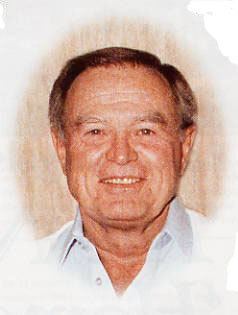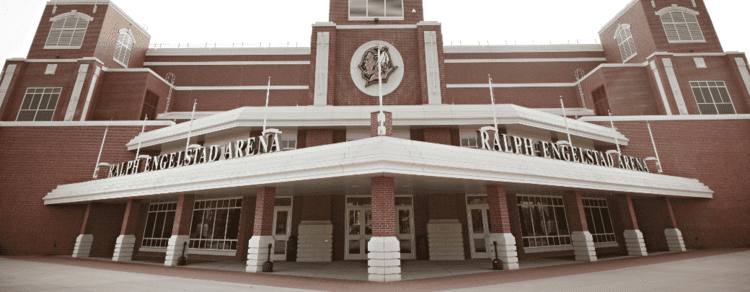Name Ralph Engelstad | ||
 | ||
Education | ||
Und hockey ralph engelstad arena players area tour
Ralph Louis Engelstad (January 28, 1930 – November 26, 2002) was the multi-millionaire owner of the Imperial Palace casino-hotels in Las Vegas and in Biloxi, Mississippi. He also owned the Kona Kai motel in Las Vegas, which later became the Klondike Hotel & Casino. He was also the donor for the construction of the $104 million Ralph Engelstad Arena for his alma mater, the University of North Dakota in Grand Forks, North Dakota, and another arena bearing his name in Thief River Falls, Minnesota. Engelstad was also a co-developer of the Las Vegas Motor Speedway. Engelstad was one of the very few independent casino-hotel owners in Las Vegas.
Contents
- Und hockey ralph engelstad arena players area tour
- University of north dakota tour of lower level renovations to ralph engelstad arena 2014 15
- Early years and business career
- UNLV Foundation donation
- Nazi controversy
- Hitler birthday party
- Fighting Sioux controversy
- Death
- References

University of north dakota tour of lower level renovations to ralph engelstad arena 2014 15
Early years and business career

Engelstad was born on January 28, 1930, in Thief River Falls, Minnesota. He was one of five children born to Christian and Madeline (Thill) Engelstad. His grandfather was a Norwegian immigrant.
During high school, Engelstad worked a summer job at AGSCO farm supply company, where his father was a salesman. In 1954, he graduated from the University of North Dakota with a degree in Business. He married Betty Stocker later that year. Shortly thereafter, he founded his own construction company: Engelstad Construction.
Engelstad became a millionaire at the age of twenty-nine. He had hoped to become a millionaire by the age of thirty. In 1959, he moved to Las Vegas, Nevada, where his construction company had secured government contracts to build FHA homes.
In 1965, he purchased the Thunderbird Field airport and later acquired vacant land nearby. In 1967, he sold 145 acres, including the airport, to billionaire Howard Hughes for $2 million. Engelstad used the money to purchase the Kona Kai motel on the Las Vegas Strip. He sold the motel in 1975 for $1.2 million.
In 1971, he purchased the Flamingo Capri Motel, also on the Las Vegas Strip. He added a casino in 1972, and later renamed the property to the Imperial Palace Hotel and Casino in 1979. By 1989, he was worth an estimated $300 million. In 1997, he opened a second Imperial Palace resort in Biloxi, Mississippi.
In 1996, Engelstad joined with Bill Bennett (owner of the Sahara Hotel and Casino) to build the Las Vegas Motor Speedway, which they later sold to Speedway Motorsports in 1998.
UNLV Foundation donation
The Engelstad Foundation made a contribution of $12.6 million to the University of Nevada Las Vegas to fund 100 full-time scholarships for incoming Freshmen students with a minimum GPA of 3.25.
Nazi controversy
Engelstad was a controversial figure. He raised accusations of being sympathetic to Nazism owing to his collection of Nazi memorabilia stored in a private room, which he referred to as his "war room", within the casino-hotel he owned - Imperial Palace. After discovery of the memorabilia, Engelstad agreed to sell it rather than put it on display. In an apology letter to the Jewish Federation of Las Vegas Engelstad said "I now feel I have done what I can and apologized for what I cannot do". In addition to the memorabilia he stored on display in his "war room", a printing plate was found within his hotel that was used to make bumper stickers that read "Hitler Was Right".
Hitler birthday party
On April 20 in 1986 and 1988, he hosted parties to celebrate Adolf Hitler's birthday at his casino in Las Vegas that featured bartenders in T-shirts reading "Adolf Hitler — European tour 1939-45". Because of this, in 1989, the Nevada Gaming Commission fined Engelstad $1.5 million "for actions that damaged the reputation and image of Nevada's gaming industry." Engelstad apologized publicly for the parties, saying they were stupid, insensitive and held in bad taste, but the row was not to be his last controversial move.
Fighting Sioux controversy
"Tradition is the gentle fabric woven through time and experience which generates meaning, character, and identity to one and all. The Fighting Sioux logo, the Fighting Sioux uniforms, the aura of the Fighting Sioux tradition and the spirit of being a Fighting Sioux are of lasting value and immeasurable significance to our past, presence, and future." —Ralph Engelstad
Engelstad embroiled himself in the fight over the Fighting Sioux logo when he built a $104 million arena on the University of North Dakota campus for the Fighting Sioux hockey program. Midway in its construction, Engelstad threatened to withdraw funding if the long-standing nickname were to be changed. The logo was placed in thousands of instances in the arena, making the prospect of removal a costly measure. Later, Engelstad placed the stadium under private (rather than University) management and stipulated that the Fighting Sioux motif be kept indefinitely. An Engelstad family trust continues to own the arena and rents it to the University.
The North Dakota Board of Higher Education ruled on April 8, 2010, to retire the Fighting Sioux nickname in response to pressure from the NCAA. On February 8, 2012 the "repeal of the repeal" took place. After 17,213 North Dakota residents signed a petition bringing the debate over the nickname to a statewide vote, UND resumed use of the nickname. On June 14, 2012, the nickname was repealed again after a vote held on June 11, 2012 on whether to keep or retire the nickname resulted in 67.35% of North Dakota voters chose to retire the "Fighting Sioux" name and American Indian head logo as a result of negative consequences resulting from impending NCAA sanctions.
Death
After a lengthy affliction with lung cancer, Engelstad died at his home in Las Vegas on November 26, 2002.
